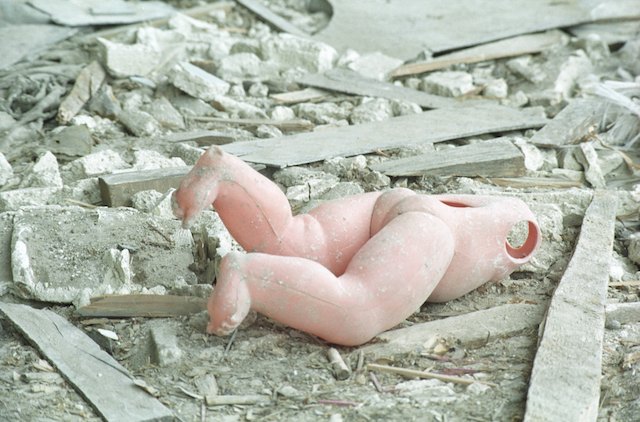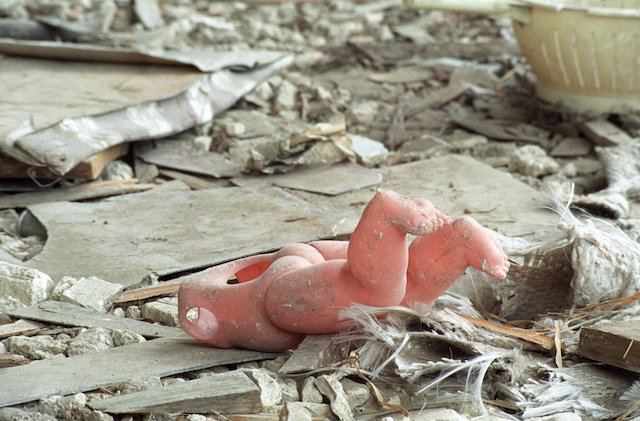Why is it important to keep things in order? It takes time and keeps you away from actual work. “Only the stupid need organisation — the genius controls the chaos”, Albert Einstein supposedly said. So why bother? Why have an organisation like HURIDOCS that helps others build databases, organise (and build) their websites and train them how to do it themselves?
Because having everything in order can be a very powerful basis for action. Many organisations do great work on the ground, they investigate human rights violations and thereby collect pivotal information. Having this information organised and accessible can be the crucial step that helps your organisation move beyond work on single cases (which is important), but to gather evidence for larger campaigns. It can allow you to move from collection to action.
And, more importantly, it enables others to do it for you. (Scroll to the main takeaways in the bottom, if you don’t want to read the whole article.)
An example from Armenia
On the example of Armenian photographer Hayk Bianjyan we want to talk about this a bit more. With a grant by the Open Society Foundations we helped Hayk digitalising his almost 10,000 photos that he had on film and trained him to organise them in an archive, together with his digital photos. In the end, it totalled about 40,000 photos – a number that indicates that organisation can be a serious challenge.
Yet, it has been one worthwhile engaging with. For years, Hayk has been documenting the streets of Yerevan and the change that came upon them. Change in the form of destruction and construction. His photos tell powerful stories, of families evicted and architecture destroyed. But not too long ago, even Hayk only had a vague idea of the treasure he had at home, as many of his photos were still on film and there was little documentation what was on that film.
With the help of Nora Erdmann, Hayk digitalised the photos in Berlin (as there was no company offering a service with sufficient quality in his native Yerevan) and then the two worked on Hayk’s archive. The sheer number made the task particularly demanding, as theoretically every single photo had to be described by hand.
As a result of this work, Hayk also decided to shoot his photos in the RAW format, instead of only Jpeg. The cost of repairing many slightly damaged pictures on film, showed him, how important it was to always maintain the highest quality possible.

Software to lessen workload
To organise the total of about 40,000 photos, Hayk and Nora used Adobe Lightroom. This made their work easier, as they were able to tag photos in bulk when they were taken on a single date or place. Using a software like this has distinctive advantages. It allows you to manipulate the so-called metadata, that is, to assign certain attributes to the photo that will stick with the photo, no matter in what folder it is on which computer. Moreover, it allows you to search for similar photos, using tags and metadata.
In that sense, it is vastly superior to using only the hierarchy that your computer offers by default. Meant by that is that on your computer everything can be only in one folder at once (unless you create a storage space-consuming copy or a not very handy shortcut of a file), although sometimes it can be useful to group items from different folders together.
For example, say Hayk took a photo of a certain street and a few years later took another photo of the same street. If he tagged both photos with the street name, they can be easily found and compared. If he only had them in folders organised according to the date, it may take him hours to figure out, which photos belong together.


Why documents are similar to photos
What is interesting is that this very similar with documents: Having them properly organised can be of high value. It can be useful for both internal and external purposes. That is, to make them retrievable for outsiders, who want to use them for their work, for example, your organisation has reports on human rights violations and academics or activists want to use them for their work. Yet, it can be useful for insiders as well, for example when new people join your organisation or even people that have worked there for years now really need to quickly find this report someone had written back then.
One tool that human rights organisations can use to engage with these challenges is OpenEvsys, a free and open source software HURIDOCS developed. OpenEvsys is a software to document human rights violations and is also a great tool to introduce consistency in documentation. Moreover, it also helps to make the collected information retrievable, for both people inside organisations and outside, if that is desired and security considerations allow it.
Enhancing the impact of your work
Consistency is also very important for Hayk’s work. When his whole archive is organised in a consistent manner, Hayk can use it to map how Yerevan changed over the years. He can find photos of one street or of one house with a click – when his photos are tagged accordingly.
Such an archive empowers not only him, but others as well – activists, journalists and historians. They can dig out stories: Of people who were forced out of their houses or of architectural treasures that were destroyed. On the basis of his work, they can start to push the government to stop the destruction of old Yerevan, because they have visual proof of the possibly dramatic outcomes. (And if you want to be one of them, please get in touch.)
Hayk is also working on telling that story himself, although he still is not entirely finished with the archive (and is also still taking photos, of course). After attending a HURIDOCS training course, he started building a website using WordPress. There, you can see some of the photos and get an idea of the stories behind them.
How can to learn from Hayk
The example of Hayk shows the importance of maintaining a good archive, not only for photographers, but also for human rights defenders documenting violations through other means. (And for many others, too.)
It is important to organise information, not only according to a folder system that is comprehensible only to the individual that created it. Each organisation has to find an individual solution, but as a minimum the following categories should be used:
- place
- time
- what happened
- by whom
- to whom
This may sound like extra labour that prevents human rights defenders from focussing on their actual work. Yet, sooner than later, it makes the work easier for those inside the organisation (or for the person who created the single pieces of data long ago and cannot remember how to find it) and also for outsiders, who are given access to information.
Hence, you should not only do that, if you have publication in mind, but also to improve your internal processes. This is important, even if you are dealing with sensitive data that should not be public, in order to not put people at risk.

No need to rush, but need to do it
As every organisation is different, there can be no single answer on how to do it (and we are happy helping you find answers for yours). But if you decide on organising your work more thoroughly, take some time to think it through. (We will post more information in future blog posts, but if you want to go on, check out our micro-thesauri, which help you index information according to agreed-upon standards.)
This is a decision that should not be made in a haste. But it will be one that will pay off in the future.
To summarise the main points:
- Make sure that documents and photos you work with are organised in a way that make them retrievable for you and your colleagues and, if desired, for outsiders.
- Software can help you doing this, but having the right processes in place is often more important.
- For documenting human rights violations OpenEvsys can be a valuable tool, for large amounts of photos, Lightroom may be a worthwhile investment.
- When you take photos, it is useful to shoot them in RAW format, not (only) in Jpeg, as that gives you greater freedom for future editing and helps to keep your archive future-proof.
- Scanning from film to digitalise archives can be very powerful, it is often useful to use professional scanning services to guarantee quality.
- A watermark can be useful to ensure your intellectual property rights are protected, even if you want to spread your photos on a large scale.
